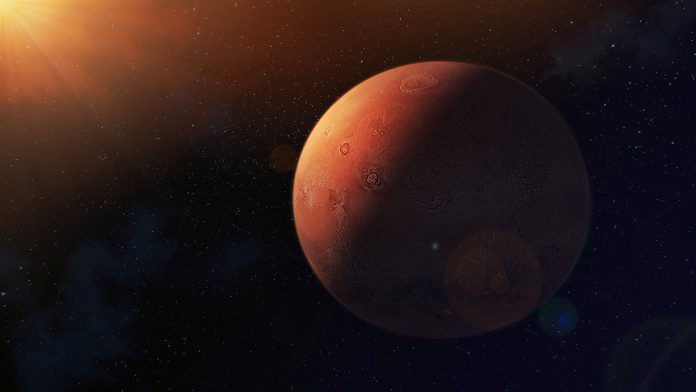A new Cornell University-led study is focusing on time-resolved analogues for the ongoing search for signs of life on Mars.
In the search for signs of life on Mars, a new study is proposing that to examine the wet-to-dry transition of Mars, similar environments on Earth should be analysed over many years. The investigation, led by Alberto Fairén, visiting scientist of astronomy at Cornell University, is looking into the extremely salty Tirez lagoon in central Spain, which had experienced fluctuating periods of dry and wet over the course of two decades before reaching total desiccation in 2015.
The results imply that if there was life on Mars when the planet had liquid water on its surface, its desiccation would not have necessarily implied that life disappeared for good. Lipids, for example fatty acids or their derivatives, have a higher resistance to degradation and should be preferred targets in the search for life in a waterless world.
The study, ‘Ecological successions throughout the desiccation of Tirez lagoon (Spain) as an astrobiological time-analogue for wet-to-dry transitions on Mars,’ is published in the journal Scientific Reports.
Comparing Mars’ wet and dry periods to Tirez’s gradual desiccation
The team focused on the locations on Mars that contained water ponds before drying up during the Noachian and Hesperian periods.
They then examined Tirez’s gradual desiccation over 25 years, using this data to better understand the evolution of microbial communities in small and dried-out lagoons.
During the early stages of desiccation in 2002, samples from Tirez were collected and analysed, and were taken again in 2021 when the lagoon was completely dry.
“We conclude that any possible early ecosystems on Mars probably collapsed when liquid water disappeared,” Fairén said, “but the changing environment would have triggered global ecological successions, with hypothetical microorganisms evolving strategies similar to those of microorganisms living in Tirez now, adapted to thrive at very low water activity in the desiccated sediments.”
The team will continue to monitor the Spanish lagoon in the search for possible life on Mars
Through the team’s continued monitoring of Tirez, the group will note any changes in its status regarding water content.
“It would be particularly interesting if the ongoing dry decade in central Spain would experience some alleviation and we could witness at least a partial comeback of the water table,” Fairén said. “That would allow us to extend even more our concept of the astrobiological time-analogue for Mars, because the desiccation of Mars was a stepwise process.
“Analysing the response of the microbiota in Tirez to the presence of liquid water again, after years of complete desiccation, would provide new insights to understand the evolution of possible ancient ecosystems on Mars,” Fairén noted.









